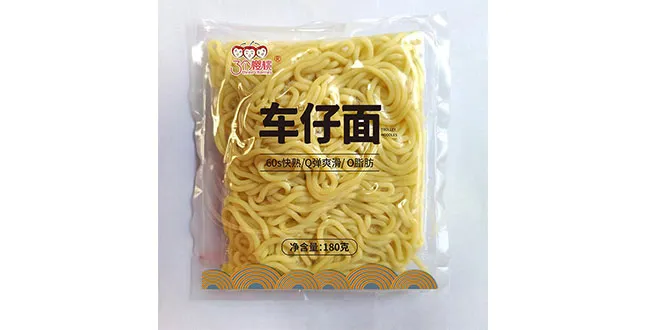is ramen bad for diabetics
Is Ramen Bad for Diabetics?
Ramen noodles have become a staple in many people's diets, especially in fast-paced lifestyles where quick meals are necessary. However, for individuals with diabetes, the impact of consuming ramen can be a significant concern. As with any dietary choice, understanding the nutritional content and how it affects blood sugar levels is crucial for those managing diabetes.
Nutritional Profile of Ramen
Traditional ramen noodles are primarily made from refined wheat flour, which can result in high carbohydrate content and a high glycemic index (GI). Foods with a high GI can cause rapid spikes in blood glucose, making them less ideal for individuals managing diabetes. A standard serving of ramen noodles can contain over 40 grams of carbohydrates, primarily from simple sugars. This means that consuming ramen can lead to a quick increase in blood sugar levels.
Moreover, many packaged ramen varieties come with flavor packets that are high in sodium and unhealthy fats. Excessive sodium can lead to increased blood pressure, which is a concern for those with diabetes, as they are already at a higher risk for cardiovascular issues. Additionally, unhealthy fats can contribute to insulin resistance, further complicating diabetes management.
The Role of Fiber
One of the primary concerns regarding ramen and its effects on diabetes is its low fiber content. Dietary fiber is essential for regulating blood sugar levels, as it helps slow down the absorption of sugar in the bloodstream. A diet rich in fiber can improve glycemic control, reduce insulin resistance, and promote overall digestive health. Unfortunately, standard ramen noodles provide minimal fiber, posing a challenge for those trying to maintain stable blood sugar levels.
To mitigate this issue, individuals with diabetes can opt for whole grain or vegetable-based noodles, which contain higher fiber content. Incorporating fibrous vegetables into ramen dishes—such as spinach, mushrooms, or bell peppers—can also enhance the nutritional value and contribute to better blood sugar management.
is ramen bad for diabetics

Portion Control and Balancing Meals
One way to enjoy ramen without compromising diabetes management is through portion control. Eating a smaller serving can help minimize the impact on blood glucose levels. Additionally, balancing ramen with protein and healthy fats can help stabilize blood sugar. Adding grilled chicken, tofu, or hard-boiled eggs can provide the necessary protein that, when combined with the carbohydrates in ramen, may lead to a slower rise in blood glucose levels.
Including healthy fats, such as avocado or nuts, can also help slow down digestion, further aiding in blood sugar control. It’s important to consider the overall composition of the meal rather than focusing solely on the ramen itself.
Monitoring Blood Sugar Levels
For diabetics, it’s essential to monitor blood sugar levels regularly, especially after consuming high-carb foods like ramen. Keeping track of how certain foods affect blood glucose can provide valuable insights into dietary choices and help individuals make informed decisions. Some may find that they can enjoy ramen in moderation without significant spikes in blood sugar, while others may need to avoid it entirely.
Conclusion
In conclusion, while ramen may not be the most diabetes-friendly food option due to its high carbohydrate and low fiber content, it is possible to enjoy it in a healthier way. By being mindful of portion sizes, incorporating higher fiber alternatives, and balancing meals with proteins and healthy fats, individuals with diabetes can enjoy ramen without derailing their dietary goals. As always, it’s best to consult with a healthcare professional or a registered dietitian for personalized advice and tailored dietary patterns that suit individual needs. Eating mindfully and making informed choices can significantly contribute to successful diabetes management, helping to maintain a balanced and enjoyable diet.
-
Unleash Your Inner Chef with Delectable Italian Pasta CreationsNewsAug.01,2025
-
Savor Health and Flavor: Irresistible Soba Noodles for Sale Await!NewsAug.01,2025
-
Nourish Your Body with Premium Organic Ramen - A Culinary Delight AwaitsNewsAug.01,2025
-
Elevate Your Dishes with Our Exquisite Kinds of Egg NoodlesNewsAug.01,2025
-
Dive into Flavorful Convenience with Our Ramen OfferingsNewsAug.01,2025
-
Discover Exquisite Types of Naengmyeon and Chilled Soba NoodlesNewsAug.01,2025
-
Is Whole Wheat Pasta Healthy?NewsMay.30,2025
Browse qua the following product new the we

















































































































